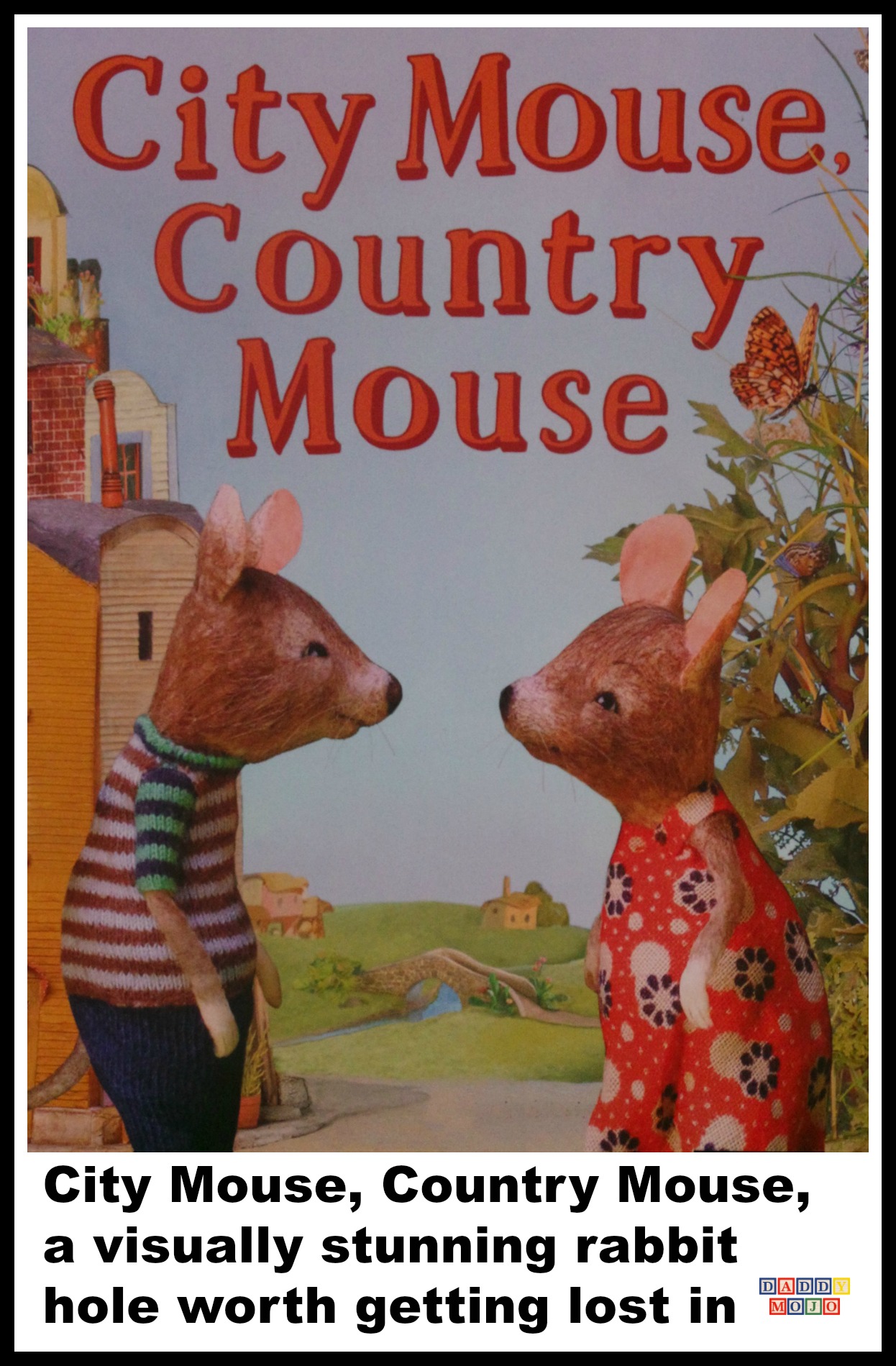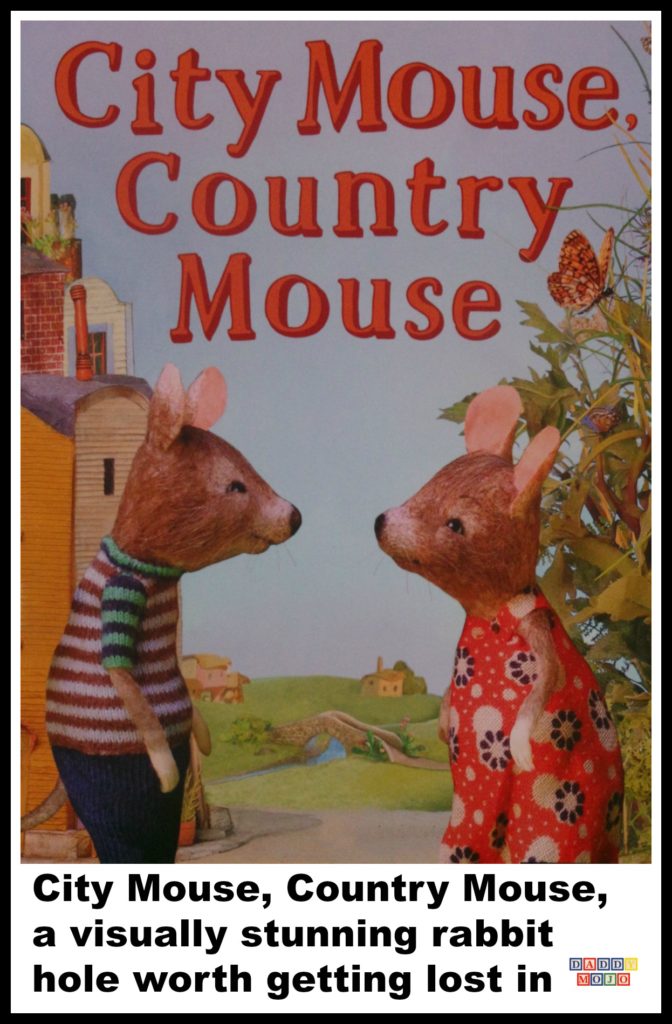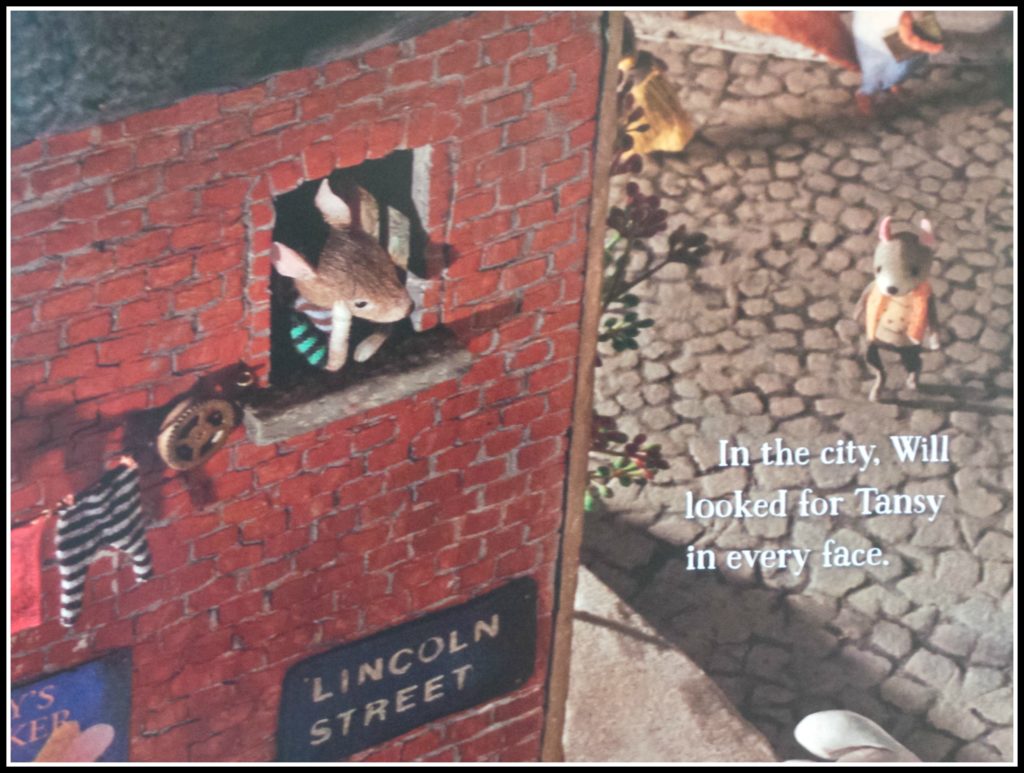I’m not an animation purist, but I absolutely love stop motion animation. It’s the tactile notion that what I see moving on screen is a real thing. I immediately think of the creators behind it, their attention to detail as they move each model one small movement at a time. City Mouse, Country Mouse by Maggie Rudy is a book that evokes that level of detail, love and commitment.
City Mouse, Country Mouse is the classic story of two mice and you’ll never guess where they’re from. One day William Gray, the city mouse meets Tansy, the country mouse as he visits a garden. They have a discussion about the country, spend the day getting to know each other and become quick friends. As William leaves the country to go back home he asks if Tansy wants to come with him.
She explores the city and has fun with her new friend, but missed the serenity and natural aspects of the country. They each go their own way and seasons pass until one day they each decide to head out toward the others location and meet up halfway.
There is more to the story, but the scenes that Rudy has created are the main reason why young readers will be glued to the book.
The mice and scenery will draw in anyone who lays eyes on City Mouse, Country Mouse. Maggie Rudy created all of the characters and scenery out of scavenged materials, felt, pipe cleaners, cotton, nylon thread and black beads. It’s an amazing testament to her work and skill that such seemingly mundane items can be used to create beautiful vignettes about mice.
Every page you look at in the book draws you in, closer and closer to investigate the details. There’s a scene where Will is looking solemnly out of his city apartment window. The cobblestone streets, tiny mouse clothing that’s hanging out to dry and the tiny, scaled appropriately trees-with their equally sized appropriately leaves will bring young readers back to the book over and over to discover new things.
There’s something about Country Mouse, City Mouse that children pick up on too. I asked our youngest, who is 6 what was different about this book and he said that ‘it looks real’. Combine that with the folksy quality and timeless story in the book and you’ve got something that kids through 2nd grade will enjoy.
The vocabulary is such that second graders will be able to read it on their own. Third graders might find the book simple to read, but will still enjoy looking at the photos-as will their parents or teachers.







 Facebook
Facebook Twitter
Twitter Flickr
Flickr GooglePlus
GooglePlus Youtube
Youtube